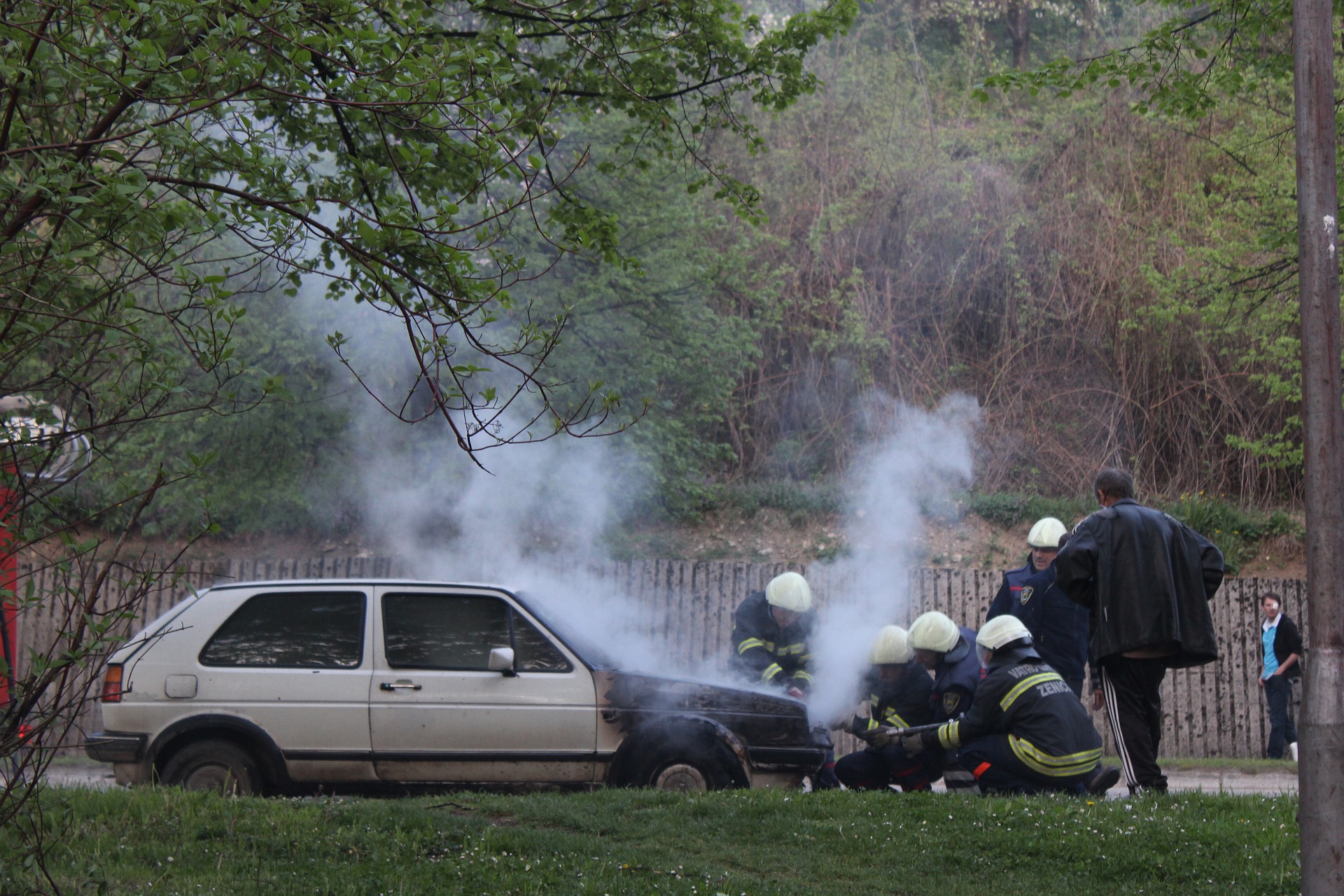Hit and run cases on the road have always been a shocker for the world, especially the urban areas. Innocent lives, for no reason, are lost because of the recklessness of some ill-minded drivers who run into ill-fated commuters. The number of hit-and-run cases has escalated around the world. And so has increased the number of people injured and killed in such accidents. Many a times, such accidents occur on highways, with the accused fleeing from the spot and hence, making it difficult for the police to nab the culprit.
The most effective way to nab the culprit is to somehow record the vehicle number of the fleeing offender. This can be done if some kind of automatic system is present in the vehicles that automatically note down essential parameters that can help uniquely identify the vehicle of offence. Moreover, such a system that can inform a nearby hospital about the accident so as to fetch an ambulance would also be quite helpful. At Idea74, we will explore a possible solution to this problem, using the technologies like RFID, crash sensors, GPS and GSM.
For each vehicle involved in the accident, a mechanism is required to record the vehicle number of the other vehicle. This is where Radio Frequency IDentification (RFID) would come into picture. The RFID tags contain a unique tag ID, which can act as a unique datum corresponding to each vehicle number. Whenever, two cars would collide, they would record the RFID tag ID of each other. However, it has to be ensured that the reading of tags is done only in the case of collision. Crash sensors in cars would help to achieve that purpose. Whenever a collision is detected by these sensors, the RFID readers would be activated. The communication of the location of accident to hospital and police would be done with the help of GSM and GPS. Let’s take a brief look at these technologies.
How Radio Frequency IDentification (RFID) works?
Radio-Frequency IDentification (RFID) is the use of a wireless non-contact system that uses radio-frequency electromagnetic fields to transfer data from a tag attached to an object, for the purposes of automatic identification and tracking. Radio-frequency Identification (RFID) uses a semiconductor (micro-chip) in a tag or label to transmit stored data when the tag or label is exposed to radio waves of the correct frequency.
| Frequency range | Frequency | Passive read distance |
| Low Frequency (LF) | 120-140 KHz | 10-20 centimetres |
| High Frequency (HF) | 13.56 MHz | 10-20 centimetres |
| Ultra-High Frequency (UHF) | 868-928 MHz | 3 meters |
| Microwave | 2.45-5.8 GHz | 3 meters |
| Ultra-Wide Frequency (UWB) | 3.1-10.6 GHz | 10 meters |
Table 1: Frequency bands used in RF systems [1]
The RFID tag is a miniature device which is attached to any object to be identified. As already mentioned, the RFID tag includes a small RF transmitter and receiver. An RFID reader transmits an encoded radio signal to interrogate the tag. RFID tags can be active or passive.
Electronic Product Code: It is a 96 bit code that helps to identify each TFID tag uniquely.

Figure 2: Electronic Product Code format [2]
How will Global Positioning System (GPS) help?
The system to be used in the vehicles would be using a GPS receiver module. GPS modules evaluate the weak antenna signals from at least four satellites, in order to arrive at a calculated value of correct three-dimensional position. Moreover, a time signal is also often emitted in addition to the information on latitude, longitude and altitude. Moreover, the values relayed by the GPS module have some iota of inaccuracy as well, which has been depicted in the table below.
| Accuracy of parameters relayed by GPS module | |||
| Parameter | Horizontal accuracy | Vertical accuracy | Time accuracy |
| Accuracy values | <= 13 meters | <= 22 meters | <= 40 nanoseconds |
Table 2: Accuracy of parameters relayed by GPS module [3]
Global System for Mobile Communications (GSM)
A GSM modem is a specialized type of modem which accepts a SIM card, and operates over a subscription to a mobile operator, just like a mobile phone. From the mobile operator perspective, a GSM modem looks just like a mobile phone. SMS client and server is an application software which is used for sending and receiving messages (SMS). It listens for incoming messages to arrive, processes the message if it’s in a valid format.
Crash Sensors
Crash sensors collect the data necessary to make decisions about air bag deployment. Crash sensors measure how quickly a vehicle slows down in a frontal crash or accelerates to the side in a side-impact crash. Some vehicles are equipped with a sensing system designed to detect the onset of a rollover crash. Frontal crash sensors may be located in the front of the vehicle near the engine, in the passenger compartment, or sometimes in the electronic control unit (ECU). Side-impact crash sensors may be located in the ECU, the door, the doorsill, or between the front and rear doors.
Vehicle SOS system to the rescue
Basic idea:
- The reimagined Electronic Control Unit (ECU) will consist of an array of crash sensors covering the car internally from all directions.
- The RFID tags will be embedded inside the high security number plates of the cars and the readers will be placed in the ECU.
- The GSM modem, when triggered in the ECU, will send a SOS signal to the hospital, police and the relatives of the accident victim.
- The ECU will also record the speedometer reading to ascertain the velocity of the car at the time of the accident.

Figure 3: Red dots show the tentative location of crash sensors
Vehicle identification and SOS signal transmission
- The ECU will get switched on along with the ignition of the engine. The ECU in the car will constantly keep on recording the speedometer reading, whenever the car is running.
- The proposed Electronic Control Unit (ECU) will consist of an array of crash sensors covering the car internally from all directions. As soon as the impact sensors detect a collision of the car with some foreign body, the RFID reader and the GSM-cum-GPS module will get triggered. At the same time, the ECU records the speedometer reading just before the detection of collision. Now two cases arise:
- The foreign body is not another vehicle, but just a tree or boulder or a person. In this case, the RFID reader though gets triggered fails to record anything.
- The foreign body is a vehicle. The RFID reader reads the RFID tag ID of that vehicle that helps to uniquely identify the other vehicle even if it escapes from the spot of the accident.
- Once the vehicle’s identity has been recorded, the GSM module extracts the GPS information from the GPS receiver module.
- Then it sends a SMS containing a SOS message to a common helpline number of hospitals (something like 102), a police station and to some specific relatives of the victim, whose numbers have been already fed in the ECU prior to its installation.
Need of speedometer reading
The aspect of recording the speedometer value is of quite a lot of importance. This is because of the following two factors.
This system will work only if both the colliding vehicles have the system installed in them. However, post an accident it would be difficult to ascertain who is the guilty. Who was the one over-speeding? This is where the speedometer values recorded by the ECUs of both the cars will help.
It is also quite possible for a prankster to crash his/her vehicle into another stationary vehicle and then claim that it was the latter vehicle which actually struck him. This can be done as a part of mischief or as a conspiracy against one’s enemy. It is here where the speedometer readings of both the cars will help reveal the actual picture.
RFID tag embedded in high-security number plates
The RFID tags are one of those elements which are at the core of this project. If the owner of a car tampers with the tag, during a collision his/her vehicle number will not get recorded by the RFID reader of the other car and hence the owner of this car will be able to escape. Therefore, it is required to place the RFID tag at a place which is inaccessible to the car owners. This can be done by embedding the flexible RFID tags inside the number plates of the cars. Tampering the number plates will mean damaging the entire number plate, which is an offence.

Figure 4: Flexible RFID tags which can be used in car number plates [2]
Algorithm
The algorithm followed by the Electronic Circuit Unit is as follows:
- Constantly check the status of crash sensors.
- Crash sensors ON/OFF?
- Crash sensors output = 0. This implies no collision detected. Go back to step 1.
- Crash sensors output = 1. This implies collision has been detected. Go to step 3.
- Trigger RFID reader. Read the RFID tag ID of other vehicle.
- Trigger GSM module. Extract GPS information.
- GPS information received (YES/NO)?
-
- Wait for the GPS information to arrive. Go to step 5.
- YES
- Store the GPS information in a register of the microcontroller in the ECU.
- Send a SMS containing a SOS message along with the GPS information, to the helpline number of a hospital, police station and pre-specified phone-numbers of relatives of the victim.
- The entire process restarts by sending a low signal to crash sensors and checking their status again. This is done to record the tag ID of another car in case the victim’s car is hit again by some other car.
-
Flowchart
The flowchart of the entire mechanism is as follows:

Figure 5: Flowchart of the entire process
Multitude of benefits with the system
The family members and the hospital ambulance can reach to the rescue of the victim, even if the victim is not in a state to inform his/her relatives about his condition. The RFID data recorded by the reader can help the police to find out the RFID tag ID of the guilty car driver, who has fled. The ECU will also record the data about the velocity of the car during the accident, to ascertain whether the victim’s car was over-speeding at the time of the mishap. This will help to penalise the real culprit behind the incident.
It would be easier for the police department to nab the culprits and the process of punishing the real culprit will become more hassle-free, owing to the availability of rock-solid unalterable evidences form this system. GSM works on satellite technology. The roads and highways are always under the coverage area of the satellites. The ECU can go a long way in saving the lives of the accident victims and also help in investigation process in the post-accident phase.
Possible pitfalls in the system
The GSM module works on the basis of satellite communication. In areas, such as thick forests or parking garages where the satellite waves cannot penetrate, this system’s working can be hindered. However, most of the accidents occur on highways and roads, which are always under the coverage area of the satellites. Damage to GSM antenna is also an area of concern.
Final thoughts
Application of technologies like RFID, GSM, GPS and crash sensors can transform the investigation of hit-and-run cases in the post-accident phase. The concept, however, should in no way be expected to ‘stop’ the hit-and-run cases. It will be a method to only help in post-accident phase investigation. The black boxes do record some vital parameters about the vehicle but cannot send a SOS signal to hospitals for rescue purpose. This cost-effective and reliable mechanism can go a long way in helping the police departments all over the globe to collar the real culprits behind the hit-and-run cases.
References
[1] An Introduction to RFID Technology, by Roy Want, Intel Research
[2] RFID Security and Privacy: A Research Survey: by Ari Juels
[3] GPS Basics by Jean-Marie Zogg











